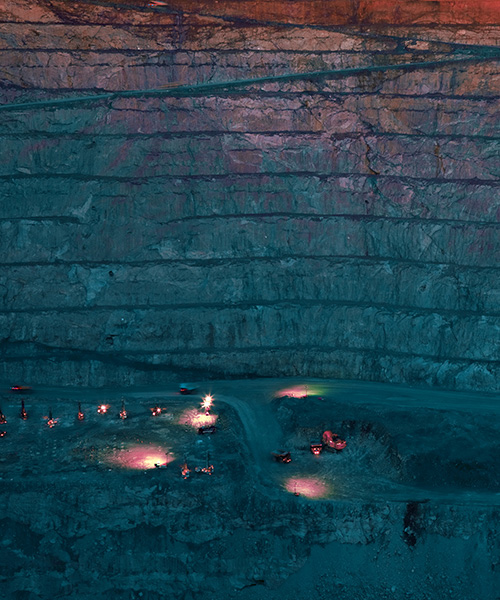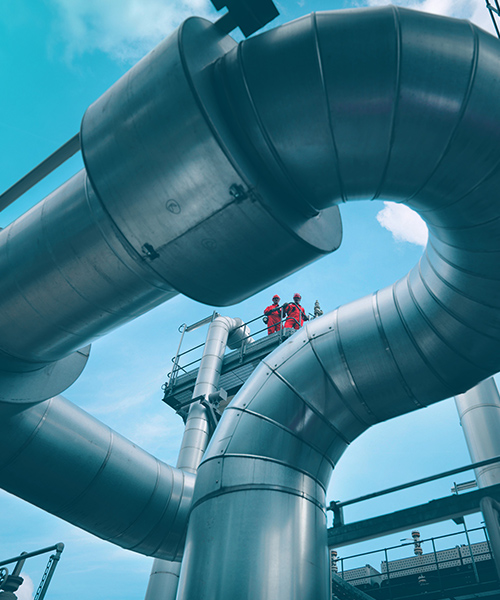July 08, 2021 • 4 min read
The future of mining: Managing the risks of adopting new technologies
How can miners embrace emerging technologies faster, and with greater confidence?
As pressures around social license, carbon intensity, water stewardship, and sustainability grow, miners around the world are reassessing the way they operate.
“The acceptable performance measures for mining operations are shifting, as society becomes more carbon aware,” says Dr. Alan Monaghan, Senior Vice President Technology and Expert Solutions, Mining, Minerals and Metals.
“For the last two decades, performance gains have been dominated by operational improvements, debottlenecking, and so on,” says Dr. Monaghan. “As we start to look beyond technical and operational issues to include social, environmental and sustainability elements, it’s no longer feasible to keep squeezing more out of what we have. Miners need to find new approaches and technologies to help them address these risks quickly.”
This means the mining industry must adopt a more agile approach to implementing new technologies.
Shareholders prefer boards to play it safe
Miners have a responsibility to spend shareholder capital wisely. And the willingness to justify to shareholders the risk of doing something that hasn’t been proven is small.
“You just have to look at the capital intensity needed in mining, and the need to achieve economies of scale to maximize the return on investment to investors,” says Dr. Monaghan. “The usual solution for improvement is to focus on small changes and limiting risks so the viability of an operation or company isn’t put in jeopardy. But as with most things, taking smaller risks means less gains.
“Taking additional risks on unproven technologies can be a step too far. Miners would be committing to a design knowing that in the lead-in period, the technology might become accepted, disproven, or even completely outdated. A customer once asked me, ‘how do I plan for the best technology solution 10 years before we’ll implement it without a crystal ball?’,” says Dr. Monaghan.
And until recently, the pressures on the mining industry haven’t provided sufficient incentive to take additional technology risks.
The time for greater industry collaboration
As performance demands increase and make technology adoption more essential, the added risks must be accepted or mitigated.
A powerful strategy for mitigation is industry collaboration. It can help miners share the risk of new technology, while still meeting the needs of their shareholders.
“Industry collaboration shares both the financial risk and the knowledge we gather,” says Dr. Monaghan. “But it also foregoes the strategic advantage that would come from developing the solution and keeping it within a single company.”
Miners can safely separate the advantages of keeping a technology in house from noncompetitive areas that benefit the industry, such as fuel substitutions and emissions reduction.
“Focused front-end-loading on the engineering of technology lowers the risk of implementation,” explains Dr. Monaghan. “Adding more definition and planning at the engineering stage helps miners to make better decisions as a technology is scaled up from concept to a solution that works in the industry.”
Taking the lessons learned from other industries
“Technology solutions only provide a payback or benefit when successfully applied at an operational scale,” explains Dr. Monaghan. “Moving a technology from prototype, pilot, or demonstration to implementation at a commercial scale requires robust methodologies.
“It also needs industry, engineering, and operational experience. And a focus on mitigating risks and uncertainties to ensure the technology is successful.”
Using lessons learned from other industries can help ensure the technology is applied efficiently and with minimal risk.
We're taking our experience in waste heat capture and off-gas processing from the chemical and oil and gas sectors and transferring it into new mining applications such as alumina refining and mine ventilation. We leverage the engineering and science aspects of a technology and bolster it with our industry experience to manage the commercial, technical, operational and change management risks.
Taking the leap of faith
The risks and uncertainties that surround new technologies require a leap of faith.
“Through early collaboration and applying engineering processes that are tailored to bring new technologies to commercial scale, miners can lower these risks to an acceptable level,” says Dr. Monaghan. “Just as you need the right tool for the job, the right approach to collaboration can help manage risks and use technology to achieve both performance and environmental targets.”




